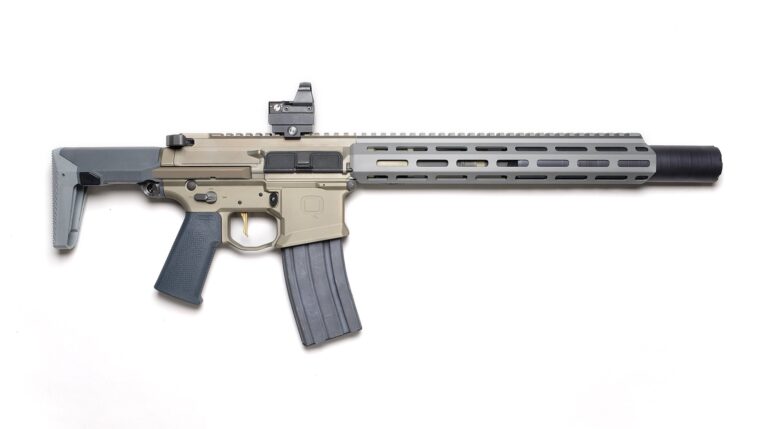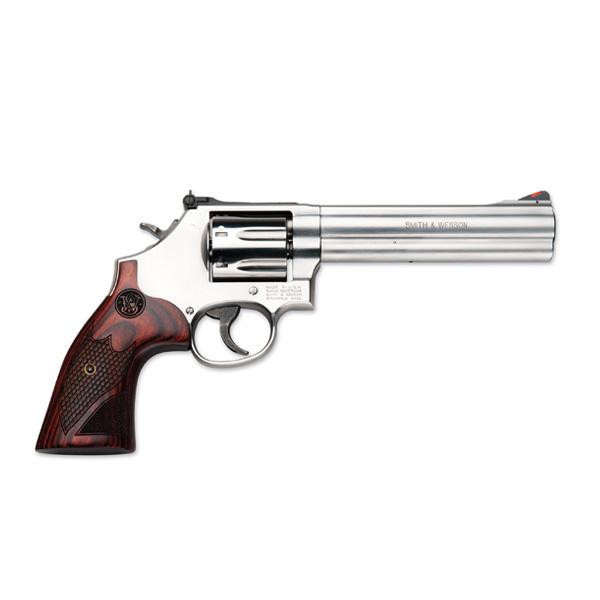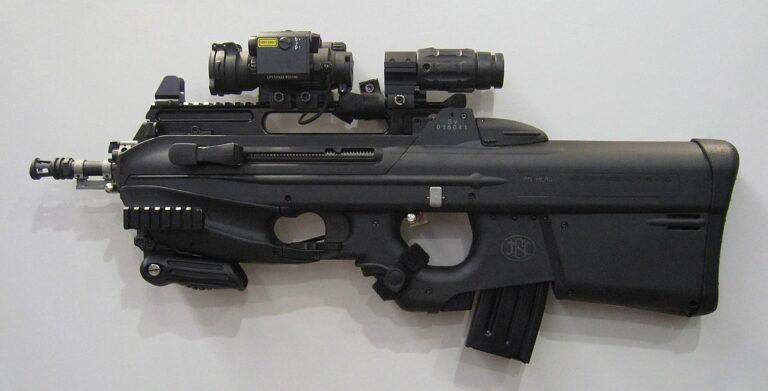Introduction
The PPS-43 is a Soviet machine pistol designed during the Second World War to offer a lighter, easier-to-produce alternative to the PPSh-41. Intended for front-line use by Soviet troops, it is distinguished by its simplicity, maneuverability and effectiveness in close combat. Officially adopted in 1943, it was widely used by theRed Army and other military forces around the world. Today, it is considered one of the most emblematic machine pistols of its time, alongside models such as the German MP 40 and the American Thompson.
History of PPS-43
Background and development
In 1942, in the midst of the Battle of Stalingrad and faced with massive Red Army losses, the USSR was looking for a weapon that would be cheaper and quicker to produce than the PPSh-41. The latter, although high-performance, required complex machining and used a lot of materials. It was against this backdrop that the PPS-42 was developed in besieged Leningrad, under extreme conditions.
Designer Alexei Sudarev is working on a more compact and robust machine pistol, with minimal use of strategic materials. The design is based on a stamped steel body, enabling mass production without the need for complex processes.
After successful testing, the weapon was slightly modified and went into production as the PPS-43. Widely distributed to Soviet troops from 1943 onwards, it became the standard weapon of many Red Army units and played a key role in late-war offensives.
Military use and distribution
PPS-43 was used extensively on the Eastern Front, in particular by :
Mechanized troops: Its compact size makes it easy to use in armoured vehicles.
Soviet paratroopers: light and foldable, perfect for airborne operations.
Partisans and resistance fighters: Easy to conceal and maintain, it is popular with guerrilla groups.
After the war, the USSR exported the PPS-43 to many Allied countries, including China, Poland and Finland, where it was used for several decades.
Technical data
| Features | Detail |
|---|---|
| Caliber | 7.62×25 mm Tokarev |
| Weight | 3.0 kg |
| Length | 825 mm (stock extended) / 615 mm (stock folded) |
| Barrel length | 250 mm |
| Magazine capacity | 35 shots |
| Firing rate | 600-700 shots/min |
| Mechanism | Open cylinder head, blowback |
| Materials | Stamped steel |
Ergonomics and design
The PPS-43 is designed for ease of production and handling. It features several key innovations:
Folding metal stock: Unlike the fixed wooden stock of the PPSh-41, the PPS-43 ‘s stock can be folded down for easy transport.
35-shot curved magazine: more reliable than the 71-shot drums of the PPSh-41, which tended to jam.
Fast, economical production: thanks to stamped steel, production is 50% faster than with PPSh-41.
Short barrel and recoil compensator: Improves manoeuvrability without sacrificing short-range accuracy.
Comparison with other submachine guns
| Model | Caliber | Weight (kg) |
| PPS-43 | 7.62×25 mm | 3,0 |
| PPSh-41 | 7.62×25 mm | 3,6 |
| MP 40 (German) | 9×19 mm | 3,97 |
Compared with the PPSh-41, the PPS-43 is lighter, more compact and easier to produce, although its ammunition capacity is slightly reduced. Compared with the MP 40, it offers a higher rate of fire and greater penetration thanks to its Tokarev 7.62×25 mm ammunition.
Contemporary use and collection
After the Second World War, the PPS-43 remained in service in many Eastern Bloc countries and in Asia. Today, it is sought after by :
Military weapons collectors: For its history and rarity.
Sport shooters: Semi-automatic versions are available on the civilian market.
Museums: Testimony to Soviet military know-how of the time.
Conclusion
The PPS-43 is an emblematic machine pistol of the Second World War, appreciated for its simplicity, reliability and ease of production. Designed to meet the urgent needs of the Red Army, it represents a milestone in the evolution of Soviet small arms, and remains an essential historical reference for military arms enthusiasts.









